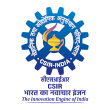Development and Promotion of Non-POPs Alternatives to DDT





Vector-borne diseases are human illnesses caused by parasites, viruses and bacteria that are transmitted by vectors. Every year there are more than 500 deaths from diseases such as malaria, dengue, , Visceral leishmaniasis, an Japanese encephalitis in the country in 2022.Beside Other than mosquito borne diseases, Kysanuar forest diseases and tick and mite borne diseases are of localized importance. But scrub typhus is a public health problem in the country.
The burden of these diseases is highest in different areas, and they disproportionately affect the poorest populations. Since 2014, major outbreaks of dengue, malaria, chikungunya, and Zika have afflicted populations, claimed lives, and overwhelmed health systems in the country. Other diseases such as Chikungunya, leishmaniasis and lymphatic filariasis cause chronic suffering, life-long morbidity, disability and occasional stigmatisation.
The prevalence of malaria was reduced to significant low level after 2017 in the country. About 95% population in the country resides in malaria endemic areas and 80% of malaria reported in the country is confined to areas consisting 20% of population residing in tribal, hilly, difficult and inaccessible areas. The case load, though steady around 2 million cases annually in the late nineties, has shown a declining trend since 2002. When interpreting API, it is important to evaluate the level of surveillance activity indicated by the annual blood examination rate. At low levels of surveillance, the Slide Positivity Rate (SPR) may be a better indicator. The SPR has also shown gradual decline from 3.50 in 1995 to 0.19 in 2020. The reported Pf cases declined from 1.14 million in 1995 to 0.12 million cases in 2020.
Dengue is public health problem in the country with 233251 cases and 303 deaths in the country. West Bengal, Bihar, Karnataka, Punjab, Rajasthan and UP were contributing maximum dengue cases in 2022.
The Kala-azar is Endemic in eastern States of India namely Bihar, Jharkhand, Uttar Pradesh and West Bengal. An estimated165.4 million population are at risk in 4 states. A total of 54 districts are endemic; sporadic cases reported from a few other districts. Mostly poor socio-economic groups of population primarily living in rural areas are highly affected. The disease is in elimination mode and cases decreased after 2014. During 2022, 818 cases and 3 deaths reported in the country.
JE viral activity has been widespread in India. The first evidence of presence of JE virus dates back to 1952. First case was reported in 1955. Here are some key points about the extent of the problem of Japanese encephalitis in India: Endemic regions: Japanese encephalitis is considered endemic in several states of India, especially in the northeastern and northern parts of the country. Outbreaks have been reported from different parts of the country. It is endemic in 327 districts of 24 states.
Chikungunya (also known as chikungunya virus disease or chikungunya fever) is a debilitating, but non-fatal, viral illness that is spread by the bite of infected mosquitoes. It resembles dengue fever.The disease is prevalent in all the states. Duing 2022, 148587 suspected and 8067 confirmed cases were reported in the country. Gujarat, Maharashtra and Karnataka were highly affected states. Japanese encephalitis cases have been reported from about 339 districts in 20 States/Union Territories. As of 2022, 5.5 lakhs Lymphedema and 1.5 lakhs Hydrocele cases reported till 2022.